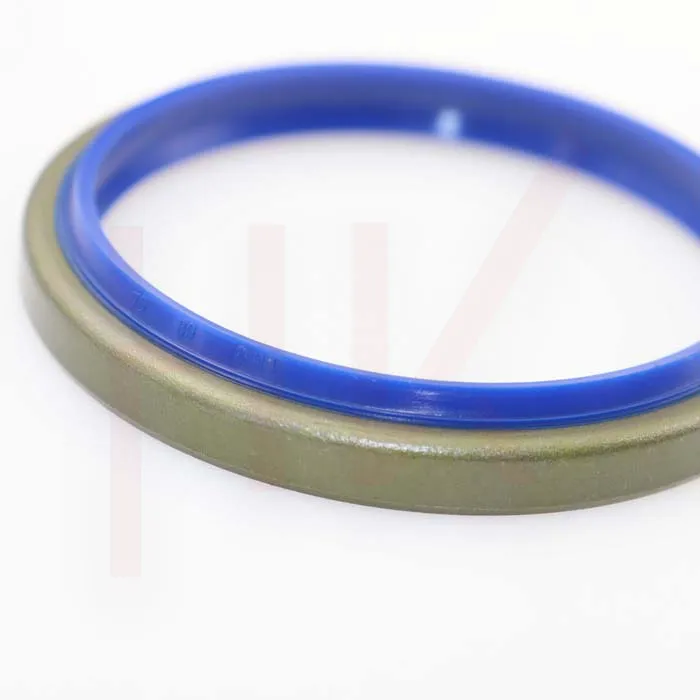Dec . 04, 2024 05:35 Back to list
Different Types of Wiper Seals and Their Applications in Various Industries
Understanding Wiper Seal Types Functionality and Applications
Wiper seals play a crucial role in various mechanical systems, particularly in hydraulic and pneumatic applications. They are designed to keep contaminants out while allowing for the smooth operation of moving parts. This article explores the different types of wiper seals, their materials, functionality, and applications.
What is a Wiper Seal?
A wiper seal is a sealing device used primarily to prevent dirt, dust, and other contaminants from entering a hydraulic or pneumatic system. It acts as a barrier, protecting the internal components from wear and tear that can be caused by external particles. Wiper seals are commonly found in applications such as hydraulic cylinders, pneumatic cylinders, and other machinery where moving parts are involved.
Types of Wiper Seals
Wiper seals come in various designs and materials, each tailored for specific applications and operating conditions. Here are some common types of wiper seals
1. U-Cup Wiper Seals - Design U-Cup wipers have a simple design that resembles the letter U. They consist of a single loop with a flat bottom that seals against the rod or piston. - Applications Commonly used in hydraulic applications, U-Cup wipers are effective in keeping dirt and debris out of the cylinder. However, they may not be suitable for high-pressure or high-speed applications.
2. Labyrinth Wiper Seals - Design Labyrinth seals utilize a series of grooves and spaces to create a complex path that contaminants must navigate to reach the internal components. This design minimizes the risk of contamination. - Applications Suited for more demanding environments, labyrinth seals are often employed in heavy machinery and automotive applications, where the potential for dirt intrusion is high.
wiper seal types

3. V-Ring Seals - Design V-Ring seals feature a flexible, elastomeric design that allows for a tight fit around a rotating shaft. The V-shaped profile creates a sealing surface that effectively engages with the shaft. - Applications These seals are commonly used in rotating equipment, such as pumps and gearboxes. Their ability to handle axial movements makes them versatile in various mechanical systems.
4. T-Seals - Design T-Seals consist of a flexible rubber element and a hard backing ring. The design resembles the letter T, where the rubber element provides the sealing function, and the backing ring supports the seal. - Applications T-Seals are highly effective in applications involving dynamic sealing between two surfaces, such as in hydraulic cylinders and packing glands.
5. Scraper Seals - Design Scraper seals are specifically designed to remove contaminants from the surface they contact. They feature a rigid lip that actively scrapes dirt and debris away as the rod moves in and out. - Applications Commonly found in construction equipment and other machinery operating in harsh environments, scraper seals are essential for prolonging the life of hydraulic cylinders by keeping the rod clean.
Material Considerations
The material of the wiper seal is crucial in determining its performance characteristics. Common materials include
- Nitrile Rubber (NBR) Offers good chemical resistance and is suitable for a range of temperatures. It is often used for general-purpose applications. - Polyurethane (PU) Known for its excellent wear resistance and ability to withstand harsh environments, polyurethane seals are ideal for high-performance applications. - Fluoroelastomers (FKM) Provide superior chemical resistance and high-temperature performance, making them suitable for extreme conditions.
Conclusion
Wiper seals are vital components in many hydraulic and pneumatic systems, preventing contaminants from causing damage to critical components. Understanding the various types of wiper seals, their designs, and materials can help in selecting the right seal for specific applications. Properly chosen and maintained wiper seals not only enhance the longevity of equipment but also improve the efficiency of operations by reducing downtime and maintenance costs. Whether in heavy machinery, automotive applications, or industrial equipment, the appropriate wiper seal can make a significant difference in performance and reliability.
-
TCN Oil Seal Metal Ring Reinforcement for Heavy Machinery
NewsJul.25,2025
-
Rotary Lip Seal Spring-Loaded Design for High-Speed Applications
NewsJul.25,2025
-
Hydraulic Cylinder Seals Polyurethane Material for High-Impact Jobs
NewsJul.25,2025
-
High Pressure Oil Seal Polyurethane Coating Wear Resistance
NewsJul.25,2025
-
Dust Proof Seal Double Lip Design for Construction Equipment
NewsJul.25,2025
-
Hub Seal Polyurethane Wear Resistance in Agricultural Vehicles
NewsJul.25,2025
-
The Trans-formative Journey of Wheel Hub Oil Seals
NewsJun.06,2025
Products categories
















